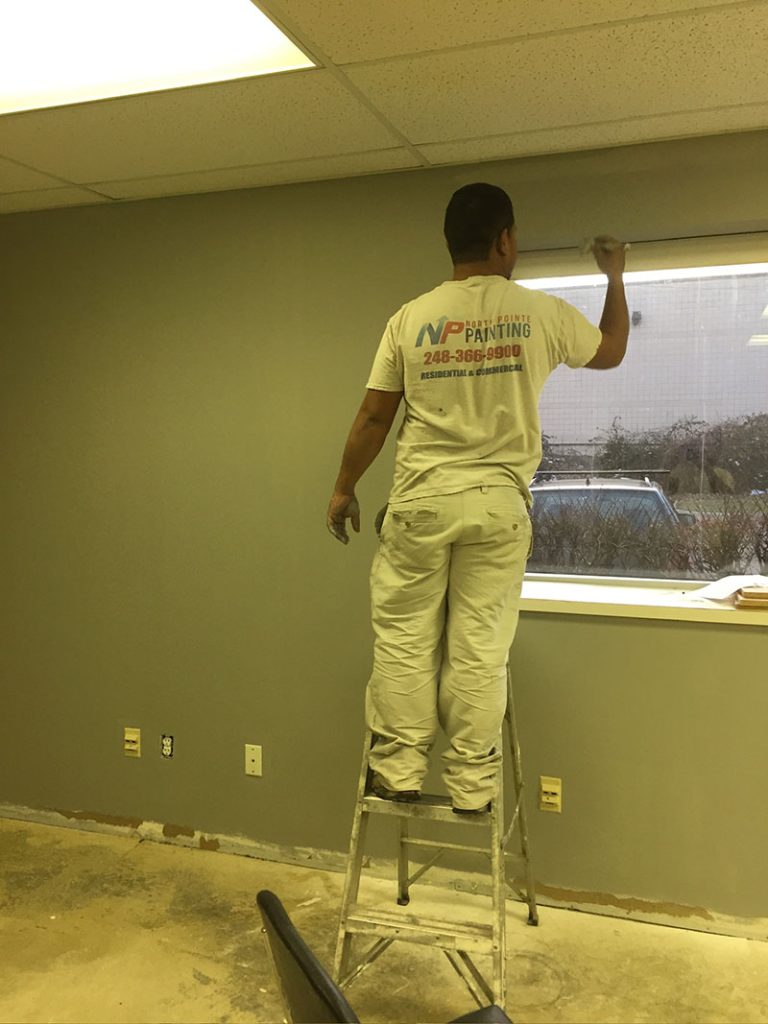A fresh coat of paint can do wonders for your home’s curb appeal, but proper preparation is essential to ensure a long-lasting, professional-looking finish. Whether your siding is wood, vinyl, or brick, prepping it correctly is the first step to a successful exterior painting project. Here’s a step-by-step guide to getting your home’s siding ready for exterior painting in Commerce, MI.
Step 1: Inspect Your Siding
Before you begin, it’s important to inspect your siding for any damage or issues that could affect the painting process.
Wood Siding: Check for rot, cracks, or loose boards. These issues should be addressed before painting to prevent further damage.
Vinyl Siding: Look for warping, cracks, or loose panels. Damaged sections may need replacement before applying paint.
Brick Siding: Inspect for cracks or mortar damage. Repairs may be needed to create a smooth, paintable surface.
Step 2: Clean the Siding
Cleaning the siding removes dirt, mildew, and debris that can interfere with paint adhesion.
Wood: Use a soft-bristle brush and a cleaning solution of water and mild detergent to scrub the surface. Rinse thoroughly with a garden hose.
Vinyl: A pressure washer is ideal for vinyl siding, but use a low-pressure setting to avoid damage. Alternatively, clean with a sponge and soapy water.
Brick: Use a stiff-bristle brush to remove dirt and moss. For stubborn stains, consider using a power washer with a masonry cleaner.
In Commerce, MI, where seasonal weather can lead to mold or grime buildup, thorough cleaning is especially important to ensure a smooth and even coat of paint.
Step 3: Repair and Patch
After cleaning, it’s time to address any repairs.
Wood: Fill cracks or holes with exterior-grade wood filler and sand the area smooth. Replace any rotted or severely damaged boards.
Vinyl: Seal small cracks with caulk or a vinyl patch kit. Replace any broken panels to ensure an even surface.
Brick: Repair cracks or damaged mortar with a masonry patching compound. Allow it to cure fully before proceeding.
Step 4: Sanding and Scraping
For wood and vinyl siding, sanding is an essential step to create a surface that paint can adhere to.
Wood: Sand any rough or peeling areas to remove old paint and create a smooth surface. Use medium-grit sandpaper for the best results.
Vinyl: Lightly sand glossy areas to help the paint stick better.
Brick: Scrape off any loose or flaking paint with a wire brush.
In Commerce, MI, where homes may experience paint peeling from seasonal weather changes, this step is crucial to achieving a uniform finish.
Step 5: Priming the Surface
Priming ensures better paint adhesion and longevity, especially for porous surfaces like wood and brick.
Wood: Apply an exterior primer specifically designed for wood. Use a brush to reach grooves and edges.
Vinyl: Use a bonding primer formulated for vinyl surfaces to ensure the paint adheres properly.
Brick: A masonry primer is necessary to seal the surface and provide a solid base for the paint.
Step 6: Masking and Protecting
Protect areas you don’t want painted by using painter’s tape and drop cloths.
Cover windows, doors, and trim with plastic sheeting.
Lay drop cloths over landscaping, patios, or sidewalks to catch any drips or spills.
Why Professional Preparation Matters
Prepping your home’s siding for exterior painting can be time-consuming and labor-intensive, but it’s a critical step for achieving a flawless, durable finish. Professional painters, like the team at North Pointe Painting in Commerce, MI, have the experience and tools to ensure every detail is addressed, from cleaning and repairs to priming and protection.
Trust North Pointe Painting for Your Exterior Painting Needs
When it comes to exterior painting in Commerce, MI, North Pointe Painting delivers exceptional results. Our expert team ensures your siding is perfectly prepped and painted, enhancing your home’s curb appeal while protecting it from the elements. Contact us today for a consultation and transform your home with a professional exterior painting service.




